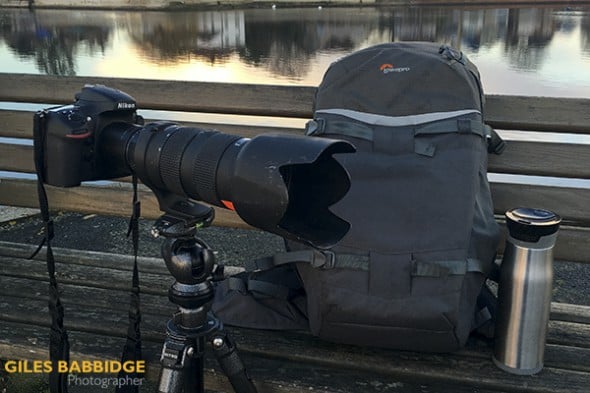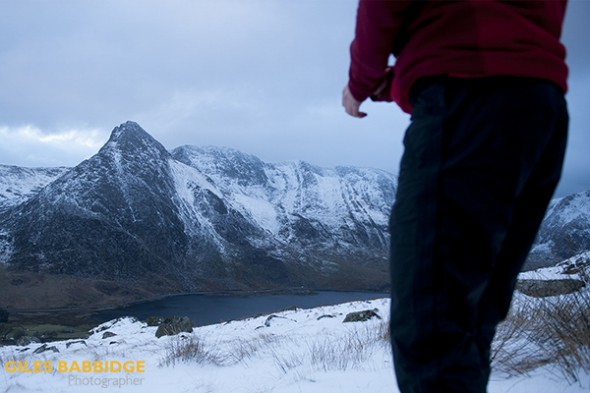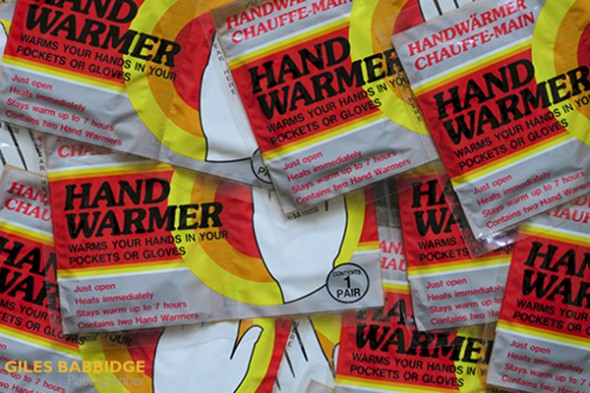Don't waste the mornings – they're full of photographic opportunity, argues Giles Babbidge
If like me you’re not a morning person, the thought of getting up at silly-o’clock to take pictures in the bitter cold can be a bit daunting. Of course, it shouldn’t be, because as we all know there are great opportunities for fantastic pictures at the start of the day – even (or, especially) in winter!
Here’s how to make the most of an early start in the winter months.
Preparation is key

Time has a funny way of passing very quickly in the darkness of early winter mornings, which is why your first priority should be to get everything ready the night before.
Make sure that your camera batteries are charged up and your sensor is clean; if you shoot at small apertures such as f/16 or f/22, even the tiniest dust marks will show in your pictures.
As well as your camera gear, remember to pack items which will keep you comfortable – this will allow you to make the most of your photography time. Warm clothing is a must (starting with thermal base layers if necessary), but also don’t forget a head torch, warm drinks and snacks to keep you going.
Before heading out, research the area you will be visiting and keep an eye on the weather forecast. Knowing where you’re going and being mindful of special considerations can make a big difference, and can also facilitate some great, unexpected photo opportunities.
A different take on the familiar

Photographs showing a wintry landscape bathed in the warm glow of a glorious sunrise are beautiful, but it’s worth seeing what you can do to add something different to the mix. This is especially important where the subject matter is familiar or has been photographed many times before.
There are plenty of ways to do this – you just need to be a little creative. For example, why not include yourself in the frame, to add a point of reference? Or try a different lens/angle combination which you’ve not seen before? How would the scene look in black and white, rather than colour? What would the picture look like if you allowed moving objects to blur rather than recording them pin-sharp?
Slow things down

One of my favourite things about shooting in the early morning is that I’ll very often have to use a tripod in order to keep the camera steady. This is no bad thing; tripods allow us to slow things down, step away from the camera and observe the scene in front of us. The result? We’re more aware of the picture opportunities available to us.
My basic photo kit for an early-morning stroll is as follows: camera, two lenses, tripod, electronic shutter release. That’s it – nice and simple. I keep everything in a photography backpack for convenience, which can be hung under my tripod to keep it off the cold/wet ground (and add ballast into the bargain).
So long as the camera is secured on a tripod, we can really make the most of its ability to capture plenty of detail. Set the lowest ISO available and select a small aperture for plenty of depth of field; f/16 is a great starting point, especially if you’re using a wide angle lens.
Chances are, you’ll be doing a fair bit of standing around during exposures lasting in the region of 5 to 10+ seconds, so a good tip is to keep hand warmers in your pockets. There’s nothing worse than being unable to operate your camera properly because your fingers are too cold!
Details and light

So much of what we do as photographers is about seeking out details within the area immediately around us. Landscapes and general views are all very well, but what about the things we might ordinarily miss?
Macro photography can offer great opportunities at this time of year. There is so much choice – frost on everyday surfaces, backlit plants at the side of a footpath to name just two – and the mundane can be transformed into something really quite interesting, if only we take a moment to see it.
Sometimes you’ll want to add a little light into a macro shot – for this, you could fire a small burst of flash or use a reflector. I would also recommend carrying a square of crumpled-up tin foil with you; it weights virtually nothing, takes up little space and its effect is very subtle when held close to the subject.
If you’re feeling brave…
Why not factor in an overnight camping trip? It’s not for everyone, but the benefits are numerous.
For one thing, being on-site at first light will allow you to make the most of your early start. Also, in a wider landscape shot, your tent will make a great, colourful focal point too (especially if you light it with your head torch from inside).
However you decide to approach them, you’ll find the photographic opportunities of winter mornings are well worth making an effort to drag yourself out of bed a little earlier than usual.
About the Author
Giles Babbidge is a commercial and editorial photographer based in Hampshire. He travels all around the UK and works with a wide range of clients – you can find out more about his day-to-day activities over at his website.
Related articles
Explore Your Local Area as a Documentary Project
The Best Photo Kit for the Frequent Traveller
How to Take Creative Pictures in Poor Weather

